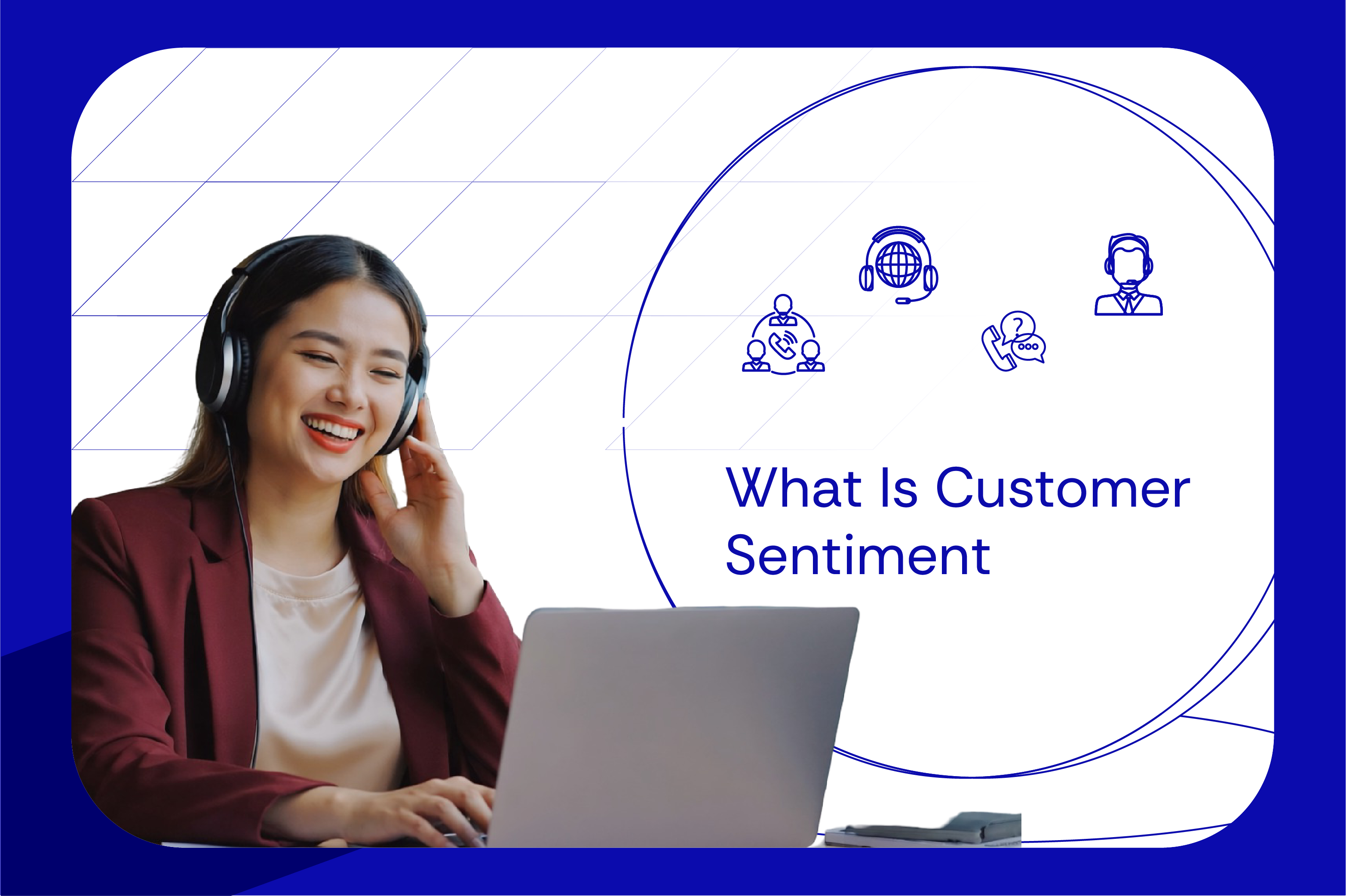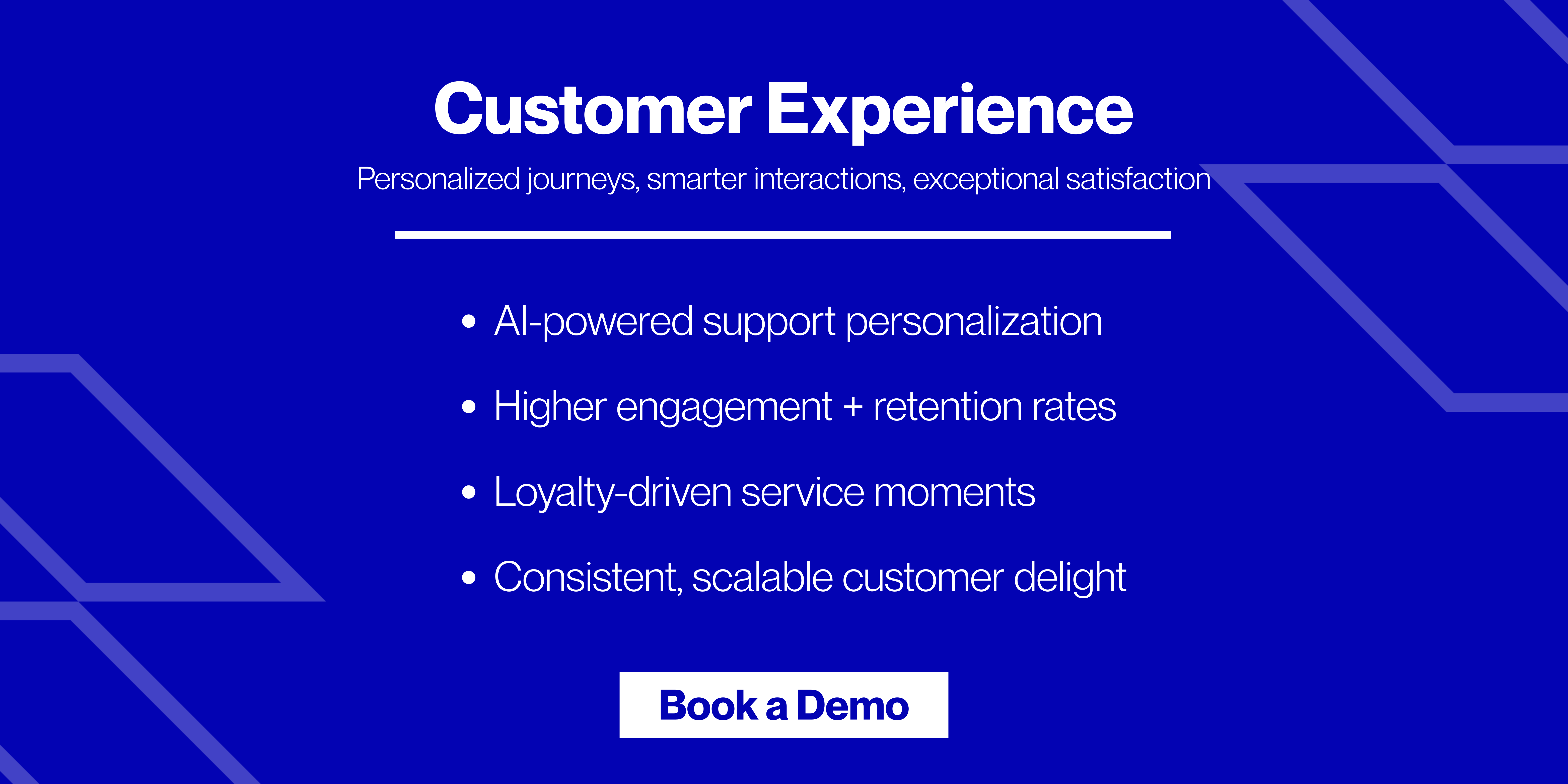A satisfied customer is the best business strategy of all.
Almost every business depends on its customers to ensure success and sustainable growth. For consumer brands and D2C companies competing in the US, UK & Australia, customer sentiment plays a direct role in long-term loyalty and profitability. If customers are happy and value your brand’s products or services, they will remain loyal because they feel positive about their experience.
You often hear about a restaurant that has great food but poor service. Even with a good product, people hesitate to recommend it because the sentiment tied to the experience is negative. The same principle applies across industries: the goal is to build a business that drives positive customer sentiment.
Customer sentiment is more than a “nice-to-have”, it’s a metric that helps leaders in customer support and customer experience understand how customers truly feel about their brand. Bad customer experiences cost businesses 6.7% of their revenue, or around $3.1 trillion. Companies that actively track customer sentiment metrics are better positioned to improve goodwill, retention, and growth.
But here’s the key: positive sentiment alone does not guarantee long-term success. VPs, Directors and Senior Managers in customer experience must integrate sentiment analysis into a broader customer experience strategy to consistently deliver value.
Atidiv has deep experience in creating unmatched customer experiences. With 15+ years of delivery expertise across 20+ industries, 200K+ CX interactions and delivering a 4.8 CSAT average, we help businesses transform customer sentiment into loyalty, revenue, and competitive advantage.
Let’s explore what customer sentiment means, why it matters, and how it can drive measurable growth for your business.
What Is Customer Sentiment?

Customer sentiment refers to customers’ opinions, emotions, attitudes, and perceptions about a business, brand, product, or service. For example, if you try a new product and love it, your sentiment toward the brand is positive, making you more likely to repurchase or recommend it.
In the past, customer sentiment had limited reach. Today, social media, online reviews, and instant communication amplify its impact. One negative experience can quickly gain attention across networks, making sentiment management a priority for high-growth brands.
Customer Sentiment and Customer Experience: They Go Hand-in-Hand

Customer sentiment is both a KPI for customer experience and a driver of it. Tracking emotions and perceptions helps companies evaluate whether their customer experience strategy is working.
Customer sentiment typically falls into three categories:
- Positive Sentiment: Signals trust and loyalty, increasing repeat purchases.
- Negative Sentiment: Reflects dissatisfaction, leading to churn and brand switching.
- Neutral Sentiment: Indicates indifference, requiring more effort to build loyalty.
Customer Sentiment Metrics Through Tools and Models

Measuring sentiment requires structured approaches supported by technology. Models and tools powered by:
- Artificial Intelligence (AI)
- Machine Learning (ML)
- Natural Language Processing (NLP)
- Natural Language Understanding (NLU)
- Natural Language Generation (NLG)
These tools aggregate data across surveys, reviews and interactions, helping CX leaders move from insights to actionable metrics.
Example:
- If 80 of 100 brand mentions are positive, sentiment is classified as positive.
- A 50/50 split indicates neutral sentiment.
Less than 50% positive mentions suggest negative sentiment.
The Importance of Customer Sentiment
Here’s why customer sentiment matters for growing brands:
- Enhancing Customer Experience: A single bad interaction can cost you a third of your customers, while multiple negative experiences can result in losing up to 64%.
- Revenue Growth: Positive sentiment drives repeat purchases and word-of-mouth referrals, directly lifting revenue.
- Customer Loyalty: Satisfied customers remain loyal even in competitive markets, protecting revenue streams.
- Brand Exposure: With 50% of customers posting experiences online and 72% sharing in person, sentiment significantly influences brand reputation.
- Marketing Effectiveness: 92% of consumers trust peer recommendations. Positive sentiment amplifies the impact of marketing campaigns.
How To Measure Customer Sentiments

You know now that customer sentiment is one of the most impactful contributing factors toward customer experience. Now, the burning question: How do we measure customer sentiment? What do you and your brand have to do to know what the customers think about your brand, products, and services?
Practical ways for brands to measure sentiment include:
- Surveys and Feedback Forms – Directly collect structured input from customers.
- Online Reviews and Ratings – Analyze what’s being said across platforms.
- Sales Data – Identify patterns of repeat purchases and growth.
- Customer Support Interactions – Review recorded calls and transcripts for recurring themes.
For leaders managing customer support and CX teams, these methods convert everyday interactions into data-driven insights.
Want A Positive Customer Sentiment? Choose Atidiv!

Customer sentiment can be complex, especially for brands managing large-scale interactions. Atidiv helps customer support and experience teams translate 200K+ customer interactions into sentiment insights, guiding strategies that boost CSAT, NPS and retention.
With a proven track record and a 4.8 average CSAT, Atidiv ensures your business is equipped to act on sentiment data and achieve measurable results. If you’re a VP, Director, or Senior Manager leading customer experience in a high-growth consumer brand, schedule a consultation with us today.
FAQs on Customer Sentiment
Q.1: What is customer sentiment, and why is it important?
Ans: Customer sentiment refers to customers’ emotions and opinions about a brand, product, or service. It is important because:
- It helps businesses understand customer experiences.
- Improve product or service quality
- Manage or improve the brand’s reputation.
- Enhance customer loyalty and retention.
- Increase sales, revenue and profits.
- Provide a competitive edge.
- Increase exposure online.
Q.2: What is the difference between customer sentiment and customer experience?
Ans: Customer sentiment refers to the emotions and opinions customers have about a brand, product, or service, often measured through reviews, social media, and feedback. Customer experience (CX) is the overall interaction and journey a customer has with a company, including service quality, ease of use, and satisfaction. The sentiment reflects how customers feel about their experience, while CX is the entire process that shapes those feelings.
Q.3: How can brands collect customer sentiment data?
Ans: Brands can collect customer sentiment data through:
- Surveys and feedback forms
- Online reviews and ratings
- Analysing sales data
- Reviewing customer support interactions
Q.4: How can a brand analyse customer sentiment?
Ans: Once the data about customer sentiment is curated, brands can use various tools and models to turn the data into measurable metrics. These are:
- Artificial Intelligence (AI)
- Machine Learning (ML)
- Natural Language Understanding (NLU)
- Natural Language Processing (NLP)
- Natural Language Generation (NLG)
Q.5: How can a business improve customer sentiment?
Ans: Businesses can improve customer sentiment by quickly addressing negative feedback, engaging with customers on social media, enhancing product quality, offering better customer service, and rewarding loyal customers. Continuous improvement based on customer insights helps maintain a positive brand image.
Q.6: What are different types of customer sentiments?
Ans: Customer sentiment can be positive, negative, or neutral. Positive sentiment indicates customer satisfaction, negative sentiment reflects dissatisfaction, and neutral sentiment shows indifference. Companies can use customer sentiment metrics to determine whether their brand, products, and services have positive, negative, or neutral customer sentiment.

